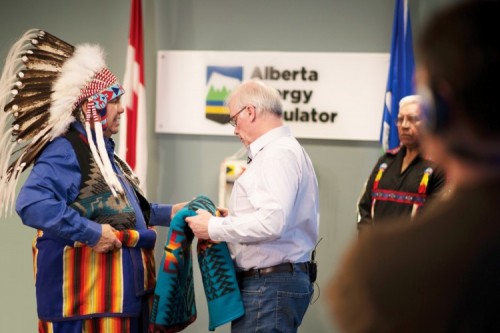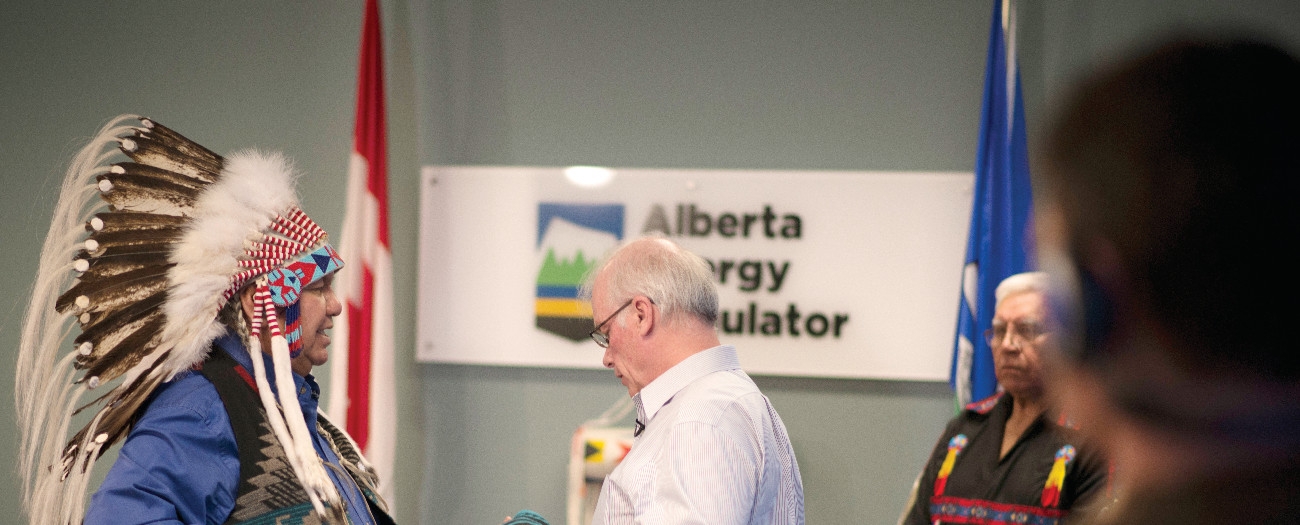It’s important that AER employees recognize the significant insight that the indigenous people of Alberta can bring to our processes
Arlette Malcolm, director of Indigenous Engagement

As a country, we’re gaining a greater understanding of the challenges our indigenous communities face. We can’t take back the past, but our journey towards truth and reconciliation calls on us to recognize our shortcomings and work together to build a new relationship based on mutual understanding and trust.
That’s why the Alberta Energy Regulator’s (AER’s) Indigenous Engagement Group is figuring out how we can do more to improve our relationships with indigenous communities across the province.
Building deeper, long-lasting partnerships with Métis and First Nations communities is more than something we have to do—it’s something we want to do to improve how we deliver on our regulatory mandate. Indigenous peoples steward Alberta’s land, air, and water, so it’s important for the AER to acknowledge the parallels between our worldviews and explore how we can work together from a place of trust and mutual respect.
More Training
Over the last year, the AER’s Indigenous Engagement Group laid the groundwork for what lies ahead. Its work included delivering more indigenous awareness training sessions for AER leadership and staff, organizing a gathering of Treaty 7 and AER executive leadership, and demonstrating a collaborative approach to engagement.
Ongoing projects include working with indigenous communities on area-based regulation (ABR) and reaching out to the Woodland Cree First Nation to start a joint learning process regarding land reclamation, remediation, and indigenous traditional knowledge. These are just a few of the first steps taken to implement the Truth and Reconciliation Commission of Canada: Calls to Action and the United Nations Declaration on the Rights of Indigenous Peoples, and to work with communities to ensure that traditional knowledge is reflected in our day-today process and decisions.
Committing to Change
We also understand that to be the change we wish to see in the world, our organization must commit to change.
“It’s important that AER employees recognize the significant insight that the indigenous people of Alberta can bring to our processes,” says Arlette Malcolm, director of Indigenous Engagement.
“To become an excellent regulator, we need to be able to engage empathically; this means we need to listen to and understand the values and concerns of our stakeholders, including Alberta’s indigenous people. We need to build a relationship of listening, mutual respect, and trust.”
This responsibility is not without challenges. Our annual surveys of Albertans indicate that First Nations and Métis communities show less satisfaction and less confidence in the regulator than do our other stakeholder groups. It also indicated that we do not adequately address indigenous communities’ concerns about the environment. We know we have growing to do.
The AER hopes to learn from indigenous people about how we can collaborate to validate traditional knowledge and traditional land-use values and link them with our existing practices. This is an essential stepping stone towards understanding and addressing cumulative effects.
The AER will also evolve its processes to better support a holistic approach to energy development—one that is mindful of both indigenous and western knowledge—in our Woodland Cree indigenous traditional knowledge and ABR projects, among others.
Natelie Brodych, Writer


